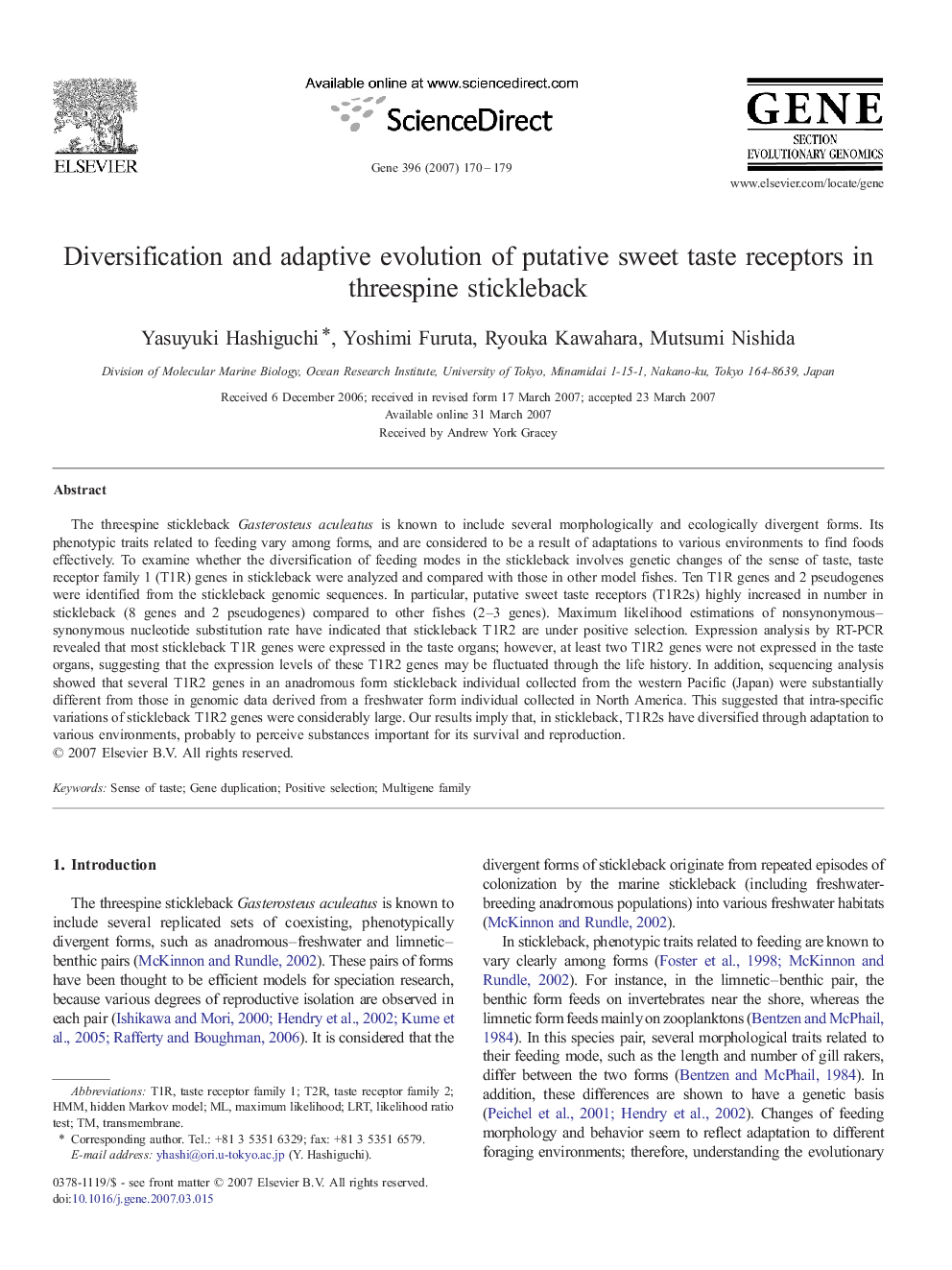| کد مقاله | کد نشریه | سال انتشار | مقاله انگلیسی | نسخه تمام متن |
|---|---|---|---|---|
| 2819596 | 1160142 | 2007 | 10 صفحه PDF | دانلود رایگان |

The threespine stickleback Gasterosteus aculeatus is known to include several morphologically and ecologically divergent forms. Its phenotypic traits related to feeding vary among forms, and are considered to be a result of adaptations to various environments to find foods effectively. To examine whether the diversification of feeding modes in the stickleback involves genetic changes of the sense of taste, taste receptor family 1 (T1R) genes in stickleback were analyzed and compared with those in other model fishes. Ten T1R genes and 2 pseudogenes were identified from the stickleback genomic sequences. In particular, putative sweet taste receptors (T1R2s) highly increased in number in stickleback (8 genes and 2 pseudogenes) compared to other fishes (2–3 genes). Maximum likelihood estimations of nonsynonymous–synonymous nucleotide substitution rate have indicated that stickleback T1R2 are under positive selection. Expression analysis by RT-PCR revealed that most stickleback T1R genes were expressed in the taste organs; however, at least two T1R2 genes were not expressed in the taste organs, suggesting that the expression levels of these T1R2 genes may be fluctuated through the life history. In addition, sequencing analysis showed that several T1R2 genes in an anadromous form stickleback individual collected from the western Pacific (Japan) were substantially different from those in genomic data derived from a freshwater form individual collected in North America. This suggested that intra-specific variations of stickleback T1R2 genes were considerably large. Our results imply that, in stickleback, T1R2s have diversified through adaptation to various environments, probably to perceive substances important for its survival and reproduction.
Journal: Gene - Volume 396, Issue 1, 1 July 2007, Pages 170–179